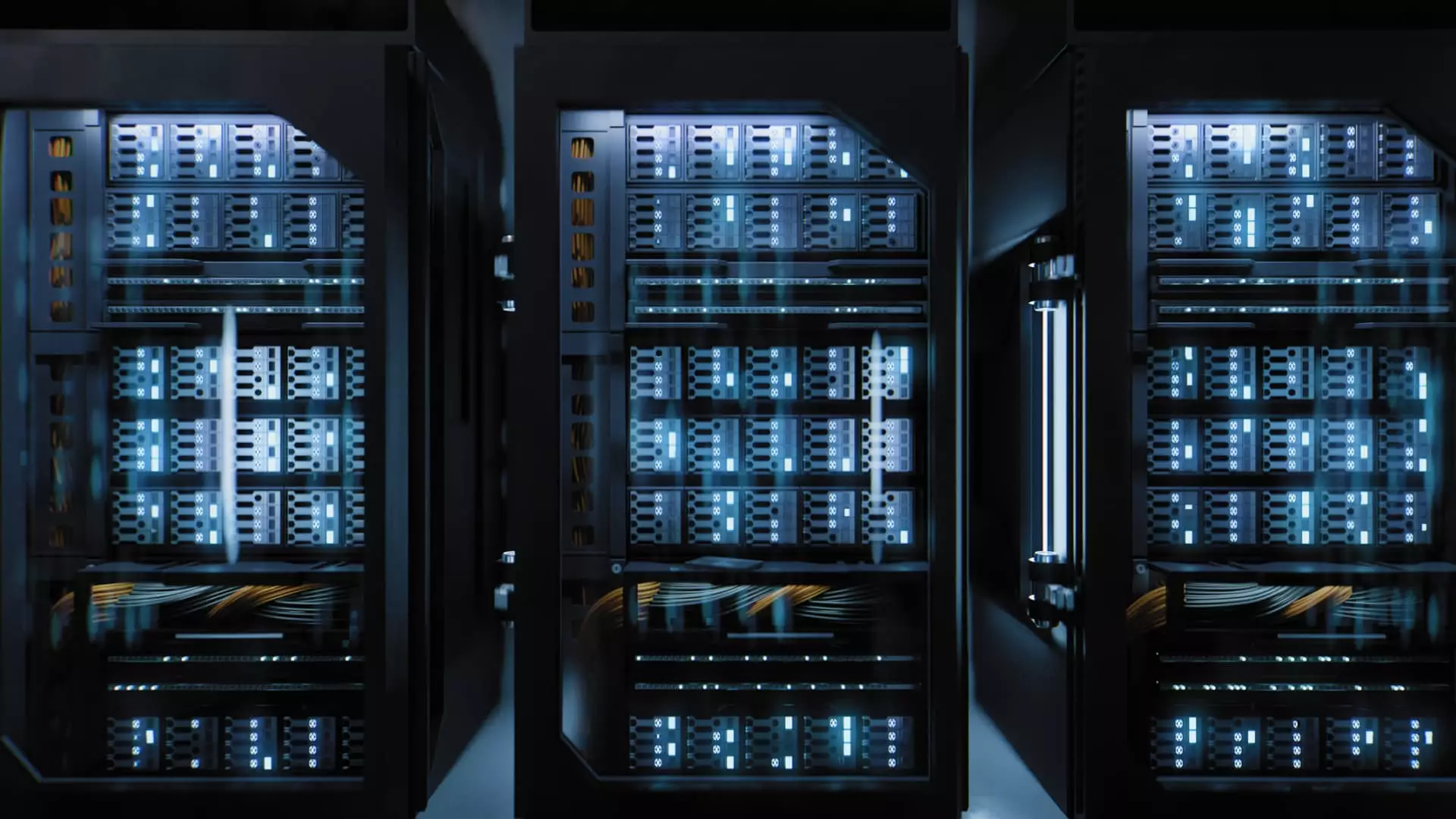As artificial intelligence (AI) technology rapidly advances and becomes increasingly integral to various sectors, the demand for data centers is set to skyrocket. Research from Goldman Sachs projects a staggering 160% increase in demand for data centers by 2030, driven largely by AI applications. This increase poses significant challenges to Europe’s environmental sustainability targets. The specialized chips that power AI platforms, particularly graphics processing units (GPUs), are energy-intensive and generate substantial heat, necessitating innovative cooling solutions.
A growing concern among industry leaders is how this heightened demand for data centers will impact energy consumption and climate goals across Europe. With an eye on reducing carbon footprints, European regulators are pushing for efficiencies in energy consumption, which is becoming increasingly complex in light of technological advancements. The introduction of AI and its reliance on high-performance computing raises questions about whether the continent can maintain its commitment to sustainability while accommodating the needs of the burgeoning AI sector.
At the heart of the matter lies the use of powerful GPUs in data centers to train and deploy sophisticated AI models. These chips, such as Nvidia’s Blackwell GB200, require densely packed computing power, leading to significantly higher energy consumption. Reports indicate that operating a square meter of an AI-focused data center can require as much energy as that consumed by 15 to 25 average homes. The intensity of computational tasks has thus spurred a call for enhanced cooling systems capable of managing the substantial heat generated during operations.
To effectively cool these advanced chips, the industry is being urged to lower the water temperatures used in cooling systems. Yet, this request contradicts many of the EU’s strategic sustainability initiatives, including the recently enacted Energy Efficiency Directive. Experts like Michael Winterson, chair of the European Data Center Association, caution that reverting to outdated cooling practices may ultimately hinder progress that has been made over the past quarter-century.
Traditionally, data centers have relied on air cooling methods, but the increasing thermal demands from AI processing have spurred interest in liquid cooling systems. However, there is an emerging trend where the tech companies behind AI chips are pushing for even lower cooling temperatures. Herbert Radlinger, managing director of NDC-GARBE, emphasizes that the shift to liquid cooling was anticipated to absorb higher temperatures to promote efficiency, rather than the other way around.
The European Commission is keen to ensure that new strategies align with energy efficiency goals; yet, the deployment of high-performance GPUs may lead to a situation where cooling systems must work harder, thereby escalating their energy consumption. Steven Carlini of Schneider Electric highlights that while cooling is the second-largest energy consumer in data centers, the desired power usage effectiveness may not meet expectations due to operational constraints.
In light of these challenges, industry stakeholders are urging a collaborative approach between technology providers and European regulators. Initiatives are underway to find “prime power” sources for AI data centers, which would facilitate more sustainable energy usage. Dialogues between the European Commission and key players like Nvidia have begun to address the energy and sustainability impacts of AI technologies. The aim is to establish frameworks that ensure both technological advancement and environmental stewardship.
Companies such as Nebius are already stepping into this new landscape, committing substantial investments toward AI infrastructure in Europe. The challenges posed by liquid cooling systems are not insurmountable, and Korolenko of Nebius views these technological hurdles as an opportunity to innovate. He recognizes that while initial costs may seem high, the long-term vision prioritizes cost efficiency and sustainability.
As the demand for AI applications intensifies, data center operators must pivot their strategies to keep pace with both market needs and regulatory demands. There is a competitive landscape emerging not only in the tech sector but also in how effectively data center operators can align their infrastructure with EU goals, such as carbon neutrality and efficient water utilization. Companies are under pressure to demonstrate their expertise in building energy-efficient and environmentally sustainable data centers.
As Sicco Boomsma from ING’s TMT team observes, the U.S. has already invested significantly in data center infrastructure in Europe. This competitive dynamic compels local operators to ensure that their facilities can meet future demands while adhering to stringent environmental regulations. The need for balance between technological advancement and sustainability has never been more critical.
As AI continues to shape the future of computing, significant challenges lie ahead for European data centers. The industry must navigate the complexities of escalating energy demands while maintaining a commitment to environmentally responsible practices. It is a precarious balancing act that will require innovation, collaboration, and sustained effort to ensure that the growth of AI does not come at the expense of the planet.

